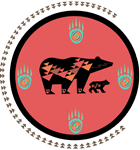The article presents a case study examining the use of a community-defined practice and evidence approach to develop tribally based in-home service models with Alaska Native communities. Topics include importance of community-defined practice and evidence, recognition of and values cultural strengths and traditions as protective factors in keeping children and families safe, and development of in-home services guided by tribal community's definition of a safe child.
- Setting
- Target
- Secondary
- Tertiary
- Child
- Family
- family conflict or violence
- history of child abuse and neglect
- lack of access to social support
- access to health and social services
- social and emotional competence

